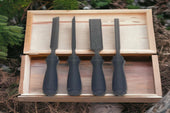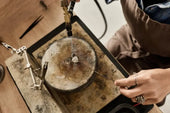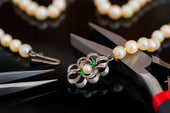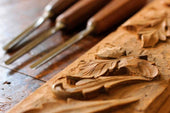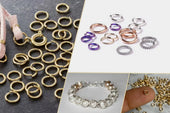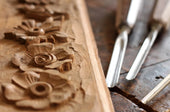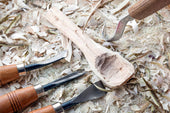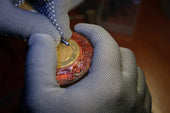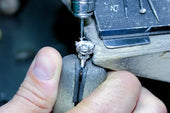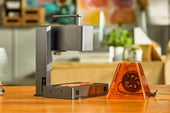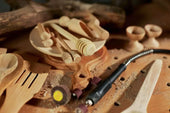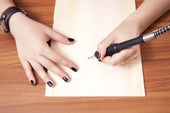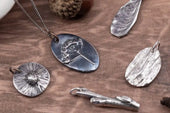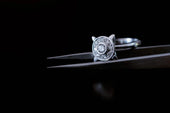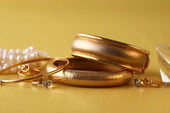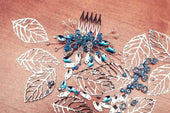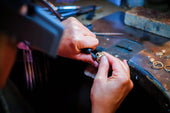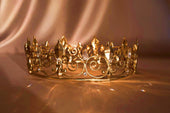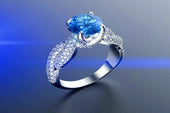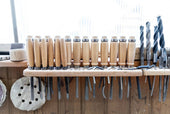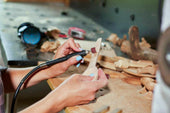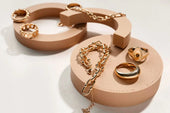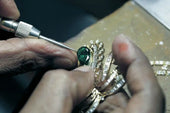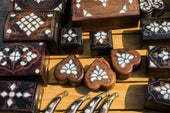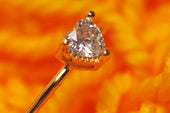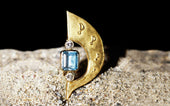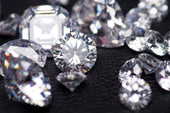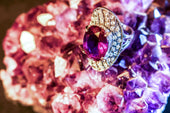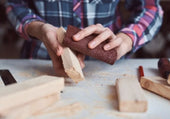When you’re making jewellery, it’s easy to focus on beads, chains, or pendants, and forget about one small but super important part: the clasp. knowing your way around different clasp types will save you time and frustration. In this guide, we’ll introduce you to eight common jewellery clasps, from the classic lobster clasp to the handy magnetic clasp, sharing what makes each one special and when to use them.
What Is a Jewellery Clasp?
A jewellery clasp is a small but essential hardware component used to connect and secure the ends of necklaces, bracelets, and other accessories. Though tiny, clasps are key part that keep your jewellery safely fastened while you wear it.
Buckles come in a variety of shapes, sizes, and styles. Some are simple and functional, while others can add a decorative touch to your design. Choosing the right buckle not only enhances your overall look but also provides a comfortable and secure fit.
8 Common Clasp Types
Now, let’s dive into 8 of the most common jewellery clasp types, exploring their unique features, pros and cons, and the best uses for each.
Lobster Clasp
The lobster clasp is one of the most widely used jewellery clasps, and it’s easy to see why. Its shape resembles a lobster’s claw, featuring a small lever that opens and closes a spring-loaded clasp. This design makes it both secure and easy to operate.
One of the biggest advantages of the lobster clasp is its durability. It can handle daily wear and tear, making it a popular choice for necklaces, bracelets, and even anklets. Its reliable grip means you don’t have to worry about your jewellery accidentally coming undone.
You can open and close it with one hand, which is especially helpful when putting on your jewellery by yourself. It works well with various chain thicknesses, adding to its versatility.
Spring Ring Clasp
The spring ring clasp is a classic favourite in jewellery making. It consists of a small circular ring with an internal spring mechanism that opens when you pull back a tiny lever. Once released, the ring snaps shut, holding the jewellery securely in place.
This clasp is particularly popular for lightweight necklaces and delicate bracelets. Its compact size keeps the overall design elegant without adding bulk, making it perfect for fine chains and dainty pieces.
However, the spring ring clasp can be a bit tricky to operate for some people, especially if you have limited finger mobility or are working with very small rings. It usually requires two hands to open and close properly, which might be a downside for everyday wear. Despite this, it remains a staple in jewellery hardware because of its simple mechanism and traditional look.
Toggle Clasp
Toggle clasps consist of two parts: a T-shaped bar and a circular or oval ring. To fasten, you simply slide the bar through the ring, where it rests securely thanks to its shape and weight. This design makes toggle clasps not only functional but also decorative. One of the biggest advantages of toggle clasps is how easy they are to use. Unlike some smaller clasps, toggles can usually be fastened with just one hand, making them a favorite among jewellery wearers who want convenience without sacrificing style.
Toggle clasps are especially popular in chunkier or statement pieces like bold bracelets and necklaces because they add a design element while providing a strong closure. They work particularly well with heavier chains or leather cords.That said, toggle clasps may not be the best choice for very lightweight or delicate jewellery, as the bar can sometimes slip out if the piece isn’t heavy enough to keep it in place.
Magnetic Clasp
Magnetic clasps are a modern favourite, especially for those who value ease and convenience. They use small but strong magnets embedded in each clasp half to snap securely together, making putting on and taking off jewellery effortless. This type of clasp is perfect for people who may struggle with traditional clasps—like seniors or anyone with limited dexterity—because it requires very little manual effort to close or open.
While magnetic clasps are great for lightweight or medium-weight jewellery, they’re not always the best choice for heavy or valuable pieces. Strong physical activity or sudden pulls can sometimes cause the magnets to separate unexpectedly. Many magnetic clasps are designed with a sleek, minimal look, making them blend seamlessly into modern or minimalist jewellery styles.
Box Clasp
The box clasp is a classic and elegant option, often found on high-end jewellery like pearl necklaces and fine bracelets. It consists of a small box-shaped housing and a tab that slides inside, locking securely with a click.
One major advantage of the box clasp is its reliability. Once locked, it stays firmly in place, providing peace of mind especially for valuable or heirloom pieces. Many box clasps also come with an additional safety latch for extra security.
Because of its design, the box clasp can be almost invisible when closed, giving your jewellery a seamless, polished look. This makes it a favorite for designs where aesthetics are just as important as function.
Barrel Clasp
Barrel clasps get their name from their shape — resembling a small, cylindrical barrel that screws together to close. This twist-lock mechanism makes them a secure option for many types of jewellery. They’re popular in simple and minimalist designs, especially for necklaces and bracelets where a discreet clasp is preferred. Because the clasp is smooth and streamlined, it doesn’t interrupt the flow of your piece’s design.
However, barrel clasps usually require two hands to open and close, which might be less convenient for everyday use. They also aren’t ideal for very heavy jewellery, as the screw mechanism can wear over time. f you want a low-profile, secure clasp for your jewellery that won’t distract from the design, the barrel clasp is a solid and reliable choice.
S Hook Clasp
The S-hook clasp is a simple yet charming type of jewellery closure shaped like the letter “S.” It works by hooking one end of the jewellery piece onto the curved ends of the clasp, making it easy to fasten and unfasten.
This clasp style is especially popular in handmade and bohemian jewellery designs due to its rustic and organic look. It pairs beautifully with leather cords, chains, and beaded pieces that lean toward a natural or vintage aesthetic.
One advantage of the S-hook clasp is its ease of use, no complicated mechanisms or springs involved, just a straightforward hook. However, because it relies on gravity and tension to stay closed, it may not be the best choice for very active wearers or for heavy jewellery pieces that could slip out.
Slide Lock Clasp
Slide lock clasps are specially designed for multi-strand jewellery, making them perfect for necklaces or bracelets with several layers or strands. This clasp features a sliding mechanism that securely locks multiple strands in place at once.
One of the biggest benefits of slide lock clasps is their ability to keep strands evenly spaced and tangle-free, which is a must-have for complex or layered designs. They provide both functionality and neatness, ensuring your piece looks polished and professional.
These clasps are usually rectangular or bar-shaped and often come with multiple loops to accommodate several strands. While slide lock clasps might be less common than simpler clasps, they’re essential hardware for jewellery makers working on intricate multi-strand projects.



